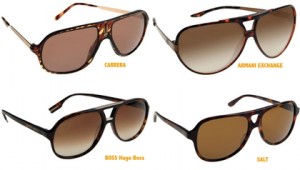
In the United States, the fashion industry does not enjoy the legal protection of copyright. Although the industry thrives on the original ideas of brilliant designers and other artists, the field is considered too utilitarian to be eligible for copyright.
According to Article I, Clause 8, Section 8 of the United States Constitution; also known as the Copyright Clause, the United States Congress is empowered “To promote the Progress of Science and useful Arts, by securing for limited Times to Authors and Inventors the exclusive Right to their respective Writings and Discoveries.” Unfortunately fashion, which is all about clothing and accessories, is not considered to fall into either of these categories. People who believe that fashion is an art form: the U.S. government disagrees with you.
According to the Northwestern Journal of Technology and Intellectual Property, current law dictates that fashion designs could be considered to be “pictorial, graphic or sculptural work” and can be protected by copyright only if “such designs incorporate…features that can be identified separately from, and are capable of existing independently of the utilitarian aspects of the article.” In other words, you cannot copyright a dress’s design because the design cannot be separated from the dress. Conversely, while the design on a t-shirt can be copyrighted, the t-shirt itself cannot. Clothing is considered to be a “useful article,” which essentially means that its primary function is to clothe us, not make us look pretty. As a result, designs aren’t considered copyrightable. And fashion isn’t alone. The same principle applies to the designs of cars, furniture and other “useful items,” no matter how innovative they may be.

Fashion’s limited protections has resulted in an industry known as ‘Fast Fashion‘. The objective of this industry is to move designs from the runway and onto shelves in the shortest time possible. This formula tries to maximize the marketing of current trends. Retail chains like Topshop, H&M and Forever 21 all follow this manufacturing philosophy. The idea is to deliver designer products to the masses at a more affordable price. Another reality coming out of fashion’s limited protection is the prevalence of designer knock-offs. Manhattan’s Canal Street is famous for its notoriously counterfeit merchandise.
Because it is essentially legal for anyone to copy a design and sell it as their own, designers have had to come up with creative ways to protect their intellectual and creative property. Although designs cannot be copyrighted, logos can be trademarked. Designers have taken advantage of this by featuring their logos prominently on their designs, making them difficult to copy without being recognized as counterfeit. Louis Vuitton designs are notable for having the ‘LV’ logo noticeably displayed. Another method that some designers have used is to develop a distinctive aesthetic, so that even if their designs are copied, they are easily identifiable as the work of the original designer. The most recent wave of trend designers have engaged in partnerships with retail stores to design affordable lines exclusively for their chain. This allows fast fashion chains to accomplish their goals without ripping off the work of designers. The collaborations work in favor of both parties involved. It was recently announced that French designer Jeanne Lanvin will be collaborating with retail chain H&M for the Winter 2010 collection. Lanvin follows in the footsteps of Karl Lagerfeld, Stella McCartney, Madonna, Roberto Cavalli, Sonia Rykiel and Jimmy Choo, who have all designed for the store in the past.

Surprisingly, a lot of opposition for copyright protection for the fashion industry has come from the within the industry itself. For some designers, imitation is the sincerest form of flattery. The consensus is that copycat fashion helps propel trends within the industry (it can’t be a trend until it’s copied) and helps to create the high turnover rate that the industry enjoys today. Copycats create a demand for new designs, which in turn boosts merchandise sales; this effect is known as the piracy paradox. The freedom of those within the industry to copy each other allows fashion to be brought to the masses, so that great fashion is not restricted to the wealthy. Copying helps to ‘democratize fashion’. Lastly, there is the simple fact that the markets for copied merchandise is specific and does not overlap with the demographic that many designers are catering to. Designer Tom Ford said simply ‘the counterfeit customer was not our customer’, meaning that the people who were buying copies on Canal Street would never have bought the originals anyway, even if the knock-offs were not available.
Even though some within the industry are adamant that copyright is needed and deserved, the majority vote is that copyright in fashion would do more harm than good. The statistics show that the current business model works. So why fix what isn’t broken?

The Copycat Trend: Copyright in the Fashion Industry /2010/09/13/the-copycat…